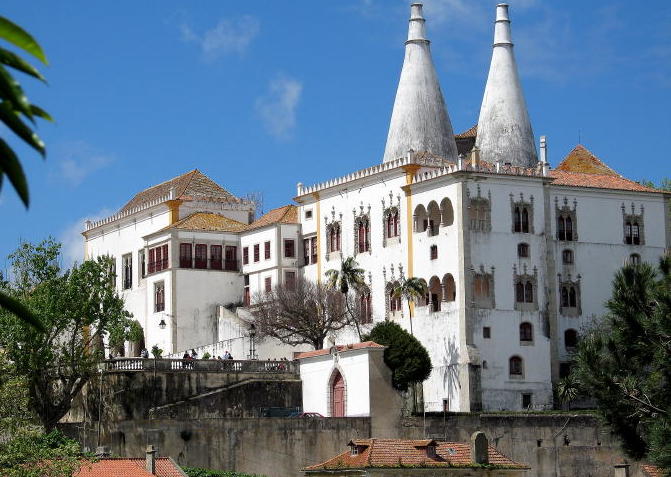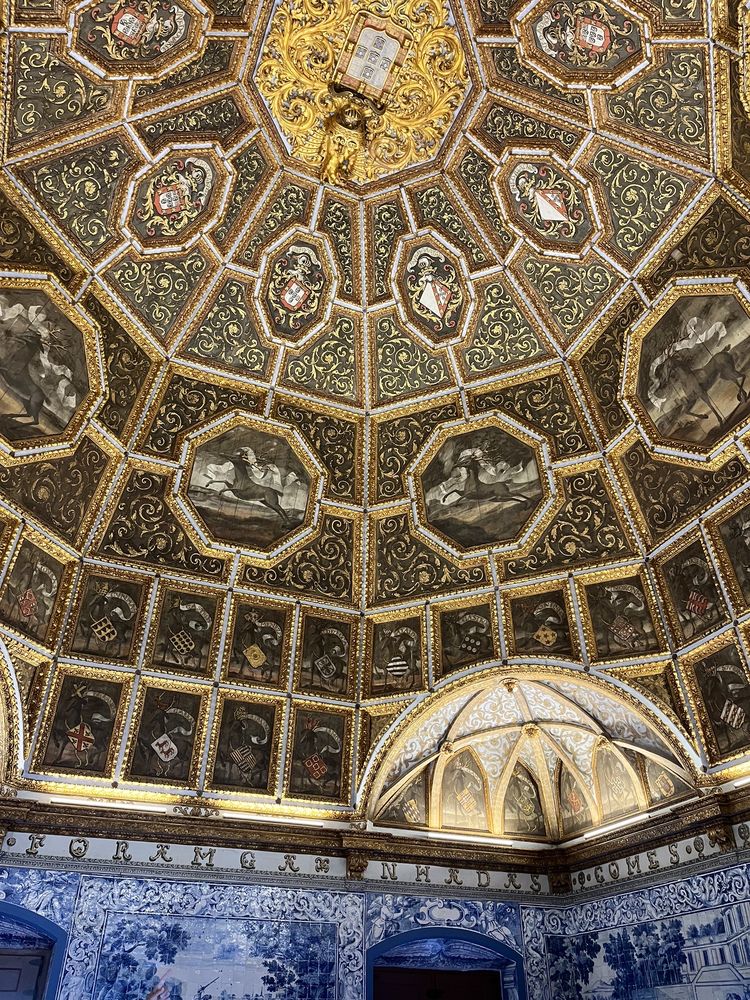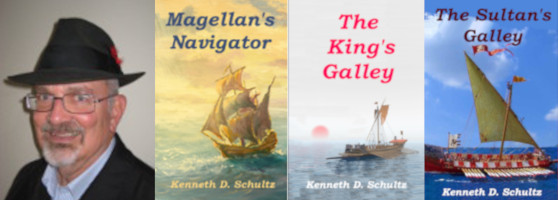

What do earthquakes have to do with Lisbon you ask?
An earthquake came in many ways to define Lisbon. The Great Earthquake of 1755 utterly destroyed most of historic Lisbon. After the quake, three tsunamis and a huge fire completed the job. So, central Lisbon is quite unlike other historic European cities with broad, logically laid-out streets lined by utilitarian, almost military buildings. Unfortunately, the earthquake erased much of the city’s charm…at least for me. Keep in mind, though, that when I look at a city, I’m always trying to imagine how it looked five hundred years ago in the Renaissance. As a sidenote, the fire also destroyed most written records of Portugal’s Age of Discovery, including Magellan’s records confiscated when the Portuguese captured his flagship in the East Indies.
Fortunately, twenty minutes away is Belém, the port on the Tagus River from whence most of Portugal’s maritime adventures were launched. Belém’s buildings largely escaped the 1755 earthquake. Sights we saw here were the 1960 Monument to the Discoveries, Belém Tower, the Monastery of Jerónimos, the Maritime Museum, and the National Coach Museum.
Wait. Did I say a National Coach Museum? Sounds boring. It wasn’t. The oldest coach belonged to King Philip II, Queen Elizabeth’s antagonist, Queen Mary’s husband, and the man who launched the Spanish Armada in 1588. This carriage had wheels with metal rims and basically no suspension. Riding in it must have been like going through the Inquisition. At the museum you can see the evolution of coaches through to modern times.
Belém Tower is a rustic stone fort built in Magellan’s time to protect the harbor. The Monastery of Jerónimos is a huge sixteenth century building inland a bit from the river. Its church, and its predecessor on the same site, is where Vasco da Gama and other explorers would have worshiped before setting out. Da Gama’s tomb is inside. Unfortunately, an event prevented us from seeing it, leaving it as a ‘must do’ for my next trip to Lisbon. The Maritime Museum fills the west wing of the monastery. It has excellent exhibits treating navigation and ships during the Age of Discovery as well as more modern ships. Finally, the Monument to the Discoveries on the river’s edge is a huge sculpture built in 1960 honoring Prince Henry the Navigator and the other men, and one woman, of Portugal’s maritime past.
Nestled into the hills fifteen miles to the northwest of Lisbon is the little town of Sintra. Portuguese royalty traditionally spent their summers there to escape the heat in Lisbon. Three castles dot the hills above Sintra: the remains of an ancient Moorish castle, the Pena Castle, a ‘modern’ idealistic palace built roughly two hundred years ago, and finally the National Palace.
We had limited time in Sintra. While I would like to have seen all three castles, we focused on the National Castle. An early draft of Magellan’s Navigator had several scenes in this castle with Vasco da Gama giving advice to King Manuel I as to how to handle the upstart Magellan.
Originally a Moorish castle was on the site. In Portugal the Reconquista, the reconquest of the Iberian Peninsula from the Moors, generally preceded that in Spain. Sintra was captured by a Christian king in the twelfth century, who converted the castle to his own use. The castle we see today was constructed mainly in the fifteenth and early sixteenth centuries. Despite its age, it is in excellent condition, due in part to restorations. It illustrates a common theme that I saw time and again in Portugal and Spain, which is that an originally Moslem Moorish structure was taken over by Christian regents and then modified to their wants. However, the architects and craftsmen that made these changes were by necessity the local ones, who were Moslem Moors. Hence, the enhancements made by the new Christian tenants inevitably had a Moorish character to them. I suppose that shouldn’t be surprising, as by many accounts for the first few hundred years of the Reconquista Christians and Moslems, and to a lesser extent Jews, lived together in relative harmony. This gradually changed, culminating with the onset of the Spanish Inquisition under Queen Isabella, and the eventual expulsion or conversion of the Jews and Moslems.
The Sintra palace is actually a castle, with defendable walls and a small inner courtyard. One thing I found fascinating was the tilework on the inner walls. Portugal is known for its tiles, mostly blue tiles. (When in Porto be sure to check out the tile mosaics in the train station foyer.) Sintra’s National Palace exhibits some of the earliest examples of this delightful decoration. What I found interesting was that the tiles in one room were set in decorative squares of four, with all four making up a pattern, with each tile having a separate, but related design. A close examination reveals the four separate patterns were painted by different people, with each type having a distinctive style.
The most impressive room, in my opinion, was the Blazons Hall, which I believe was used as a reception hall. The usual blue tiles adorn the lower walls. The ceiling is a tall dome with King Manuel’s coat of arms at its peak. Around the king’s coat of arms are those of his children. Lower yet on the dome are the over sixty coats of arms of the main Portuguese noble families of the time. Finally, between these and the wall tiles, are different tiles depicting hunting scenes.
Another interesting room is the large kitchen. This has two large conical chimneys, which gives the outside of the castle its distinctive look.
The National Palace in Sintra is a must see if you are visiting Portugal and are interested in its historic buildings. I’ve focused on the buildings of Portugal, but it has so much more to offer. If you are a seafood lover like me, you’ll enjoy the many dishes featuring the fruit of the sea. At the other extreme is pastel de nata, a tasty egg custard tart pastry. Each town seems to have its own version of this, with the Pastel de Belém being arguably the king of the breed.
The first photo is of the Sintra National Palace courtesy of WikiCommons. The second photo is of the Blazons Hall dome.
